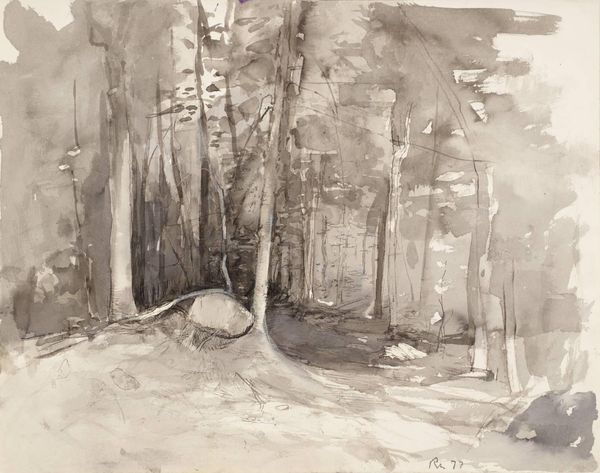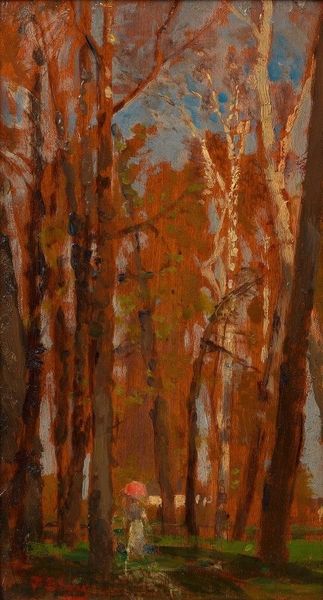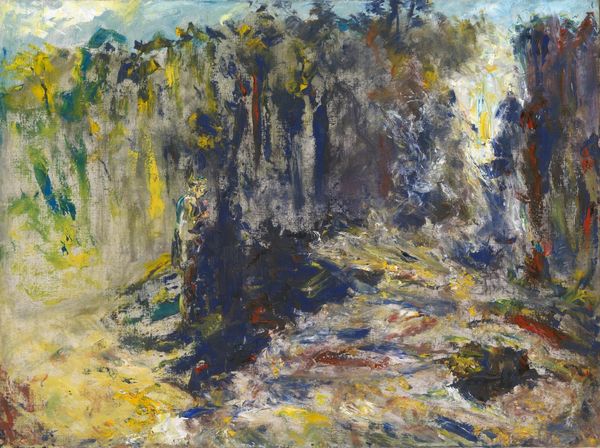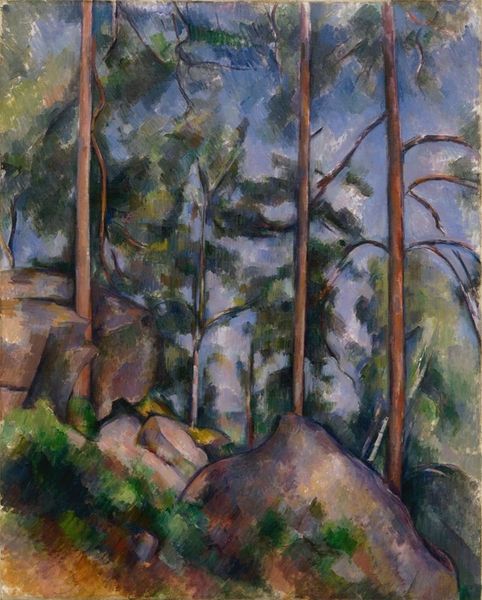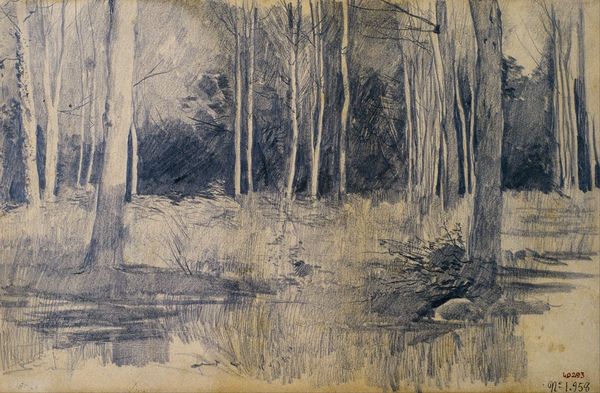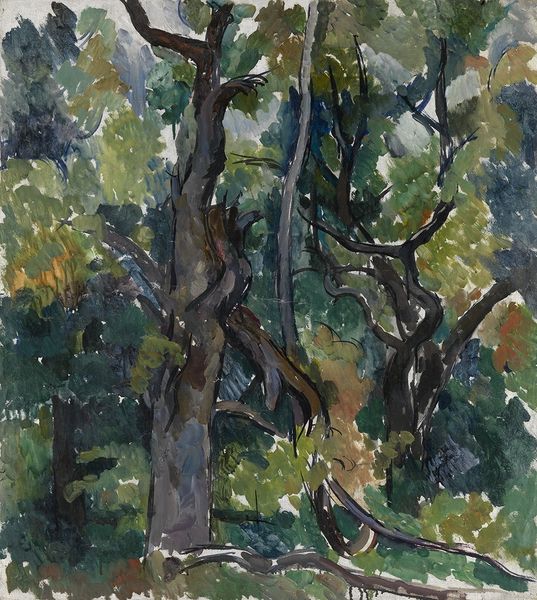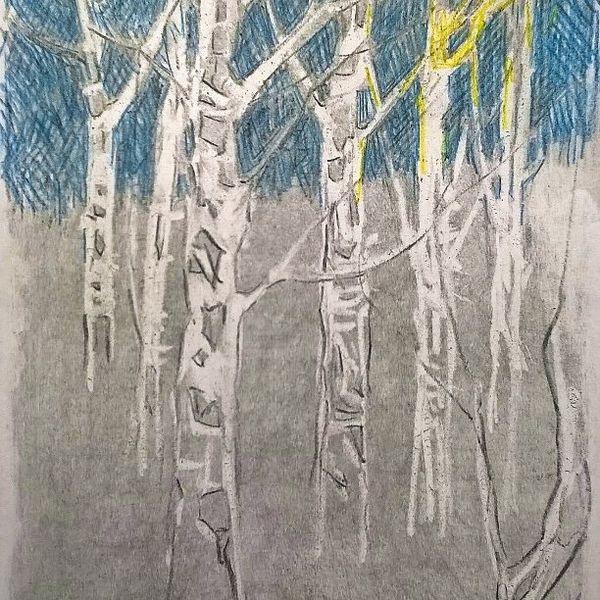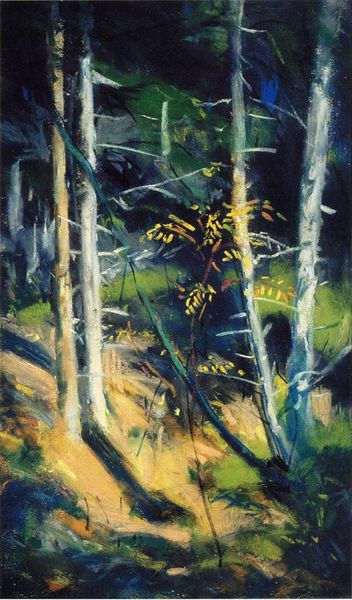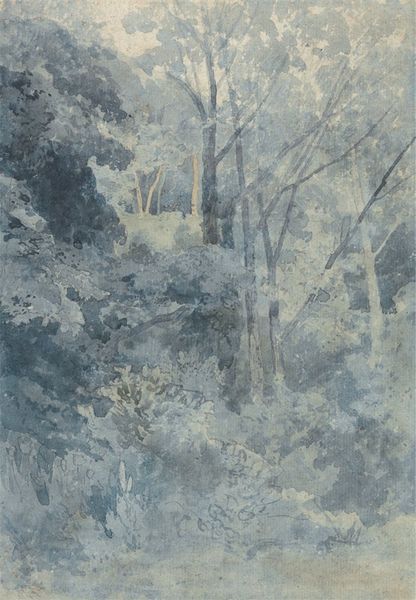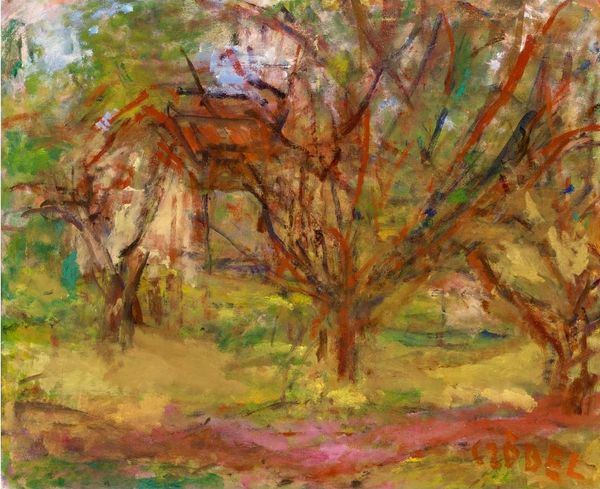
Copyright: Public domain
Editor: This watercolor by Paul Cézanne, “The Park of the Chateau Noir with Well,” created around 1904, gives me such a hazy, dreamlike feeling. I’m curious, what’s your take on this seemingly straightforward landscape? Curator: What I see is far from straightforward! While seemingly a landscape, it's critical to situate this work within the socio-political context of its time, notably the rise of industrialization. Doesn’t this fractured representation of nature act almost as a quiet resistance against the encroaching mechanization that threatened to overshadow organic experience? Editor: That's a very interesting lens. I wouldn't have initially connected the loose brushstrokes with that kind of statement. Curator: Consider also Cézanne’s relationship with Provence. It was more than just a location. It represented a sense of cultural identity that was separate from the centralized power of Paris. The return to nature, a theme echoed in many of his works, can be seen as reclaiming a space, asserting the importance of regional culture amidst homogenizing forces. Editor: So, by painting ‘en plein air,’ he's not just capturing light and color but also making a statement about place and identity? Curator: Precisely! And who has access to these idyllic places? Whose stories are elevated in the landscape tradition and whose are erased? Think about class, gender, and access to leisure and land. It provokes deeper questions about our relationship to the environment and each other. What do you think? Editor: That makes me think about how we romanticize the natural world while often ignoring issues of access and ownership. It’s almost unsettling to view it as an active participant in a social dialogue rather than just a passive backdrop. Curator: Precisely the kind of discomfort I'm hoping to spark. Seeing art as interwoven with social realities is crucial to unlocking its full potential for understanding and transformation. Editor: This has changed the way I’ll look at landscapes from now on. Thanks for opening my eyes to new perspectives.
Comments
No comments
Be the first to comment and join the conversation on the ultimate creative platform.



